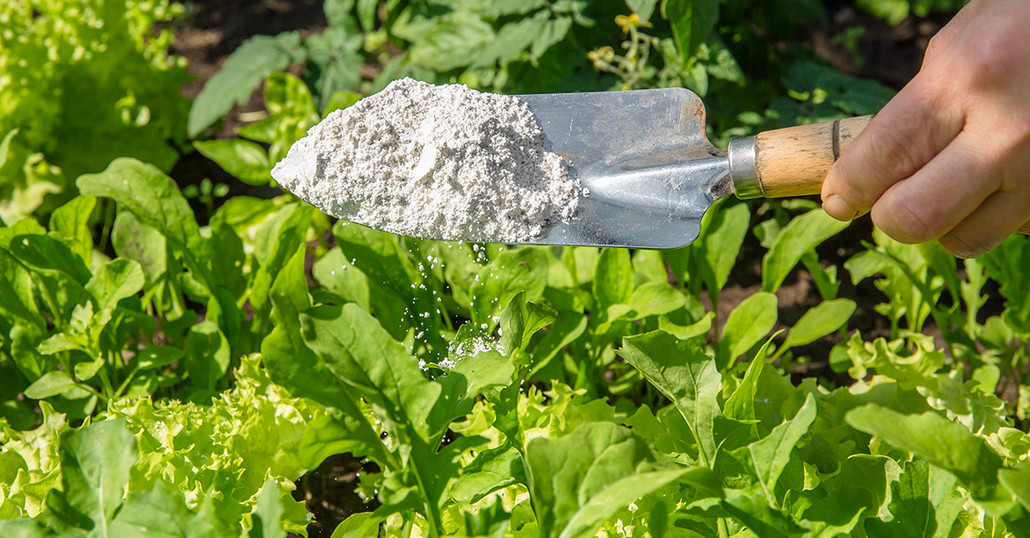
Diatomaceous Earth
Posted by Grange Co-op on 27th Aug 2022
Looking for an all-natural, non-poisonous way to get rid of pesky mites, earwigs, slugs, ants and bugs from your garden? If you haven’t heard of Diatomaceous Earth, then you definitely should pick up some of this amazing powder the next time you’re at Grange Co-op!
Diatomaceous earth is probably one of the most helpful (and safest) substances you can use around your garden, farm, chicken coops, and home areas. Although there are many spectacular cosmetic-based uses for food-grade diatomaceous earth, we will focus on the uses of this product for everyday home, gardening, and farm-based needs.
HOW DOES DIATOMACEOUS EARTH WORK?
Diatomaceous Earth powder is naturally occurring because the particles that make up the powder are derived from the hardened fossils of tiny, aquatic organisms called diatoms. These fossils made from crystalline silica have been ground down to a super-fine dust that feels powdery to us (it is an anti-caking agent much like baking soda). Although us humans will not be bothered by the fine texture of this powder, small bugs and insects will find the fossil particles to be dangerously large and razor sharp in comparison. To garden pests, bed bugs, ticks, and even flea infestations, this fine powder is a dangerous labyrinth that many will fail to escape!
Imagine traversing through a dense forest of thorny bushes woven so tightly that it is impossible to move an inch without getting cut. Not only that, but the ground beneath you is completely covered in sharp shards of glass so it is impossible to walk anywhere.
This is how those pesky insects will feel when surrounded by diatomaceous earth - the insects will feel unable to traverse across the garden without fatally harming themselves with the sharp-laden substance. This is why diatomaceous earth is so neat - bugs are unable to build up a tolerance against it! It literally is a physical barb-wire fence for pests.
Bugs cannot avoid scratching up their outer shells with the sharp fossil pieces. With their outer shells severely damaged due to the scratches, bugs cannot stay properly hydrated nor protected which is how diatomaceous earth can kill insects.
SAFETY PRECAUTIONS:
Diatomaceous earth is not a poisonous substance, although there are food-grade and filter-grade varieties available on the market. It is important that you use the “food-grade” level for any use around your home, since the filter-grade powders (mainly used for swimming pool filters) have higher levels of silica and other potentially harmful substances due to the way they are processed.
Take special precaution not to inhale the powder or to allow it to make contact with your skin. We recommend using a face mask and wearing gloves anytime you handle Diatomaceous earth for best safety practices.
If you have to transfer the powder from one container to another, use a method (some type of funnel) that does not allow an excessive amount of powder to spread through the air so it lessens the chance of inhaling it.
HOW & WHEN TO USE IT:
Always read the label on the product that you purchase, since it will provide specific details on the application of that particular powder. However, we have a couple of methods that we recommend in order to apply Diatomaceous earth for your various needs:
Dry-Sprinkle Method:
One way to apply the powder is to sprinkle it through a large shaker container that has holes, so that the amount of powder that is sprinkled can be controlled more precisely.
Note that Diatomaceous earth is effective only when in its dried state, but you can apply it to your plants in the early mornings or late evenings when they are freshly covered in dew; the light dew moisture will allow the powder to adhere to the plants better. The powder will dry throughout the day and do its magic.
Spray Method:
You can dissolve several tablespoons of Diatomaceous earth in liter of water, and then pour the solution into a sprayer bottle to spray onto the plants. The water will actually allow the powder to adhere to any leaves or plants that you spray it on - when the powder dries, it will activate and become effective against bugs.
WHERE TO USE IT:
Sprinkle or spray food-grade level powder around your vegetable plants (on the leaves and around the soil) to ward off pesky bugs, ranging from tiny mites and ants all the way to larger snails and slugs. Keep the layer of powder light and thin on the leaves so the leaves are still able to access sunlight to photosynthesize.
To prevent slugs and snails from getting into your plant beds, you can create a “barb-wire fence” of Diatomaceous earth by sprinkling a thick ring around your plants.
Avoid Contacting with Flower Blossoms:
You should avoid getting any of the powder on the flower blossoms because friendly bees will not be able to access the flowers in order to pollinate them properly. Don’t worry about killing off those beneficial earthworms - diatomaceous earth is earthworm safe!
Keep mites and lice away from your chickens by sprinkling a thin layer of powder in their dust-bathing areas.
Keep Your Pets Free of Ticks & Fleas:
Diatomaceous earth can also keep away those pesky fleas and ticks from your beloved cats and dogs. All you need to do is sprinkle a thin layer of the powder around your pets’ bed areas (and anywhere they tend to hang around). Give your pets a bath every few days to wash off any excess powder, which can actually dry out the skin of your pets if left on for too long. After several weeks, you can vacuum up the powder to get rid of any dead bugs or eggs left over.
Next time you visit our stores, don’t forget to grab some Diatomaceous earth to have on stock at home! You’ll be surprised at how often you will find this product to be useful around your home.
